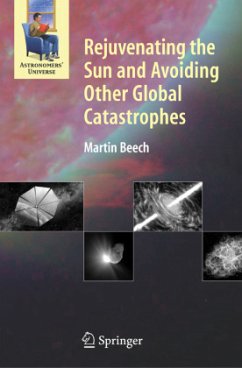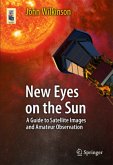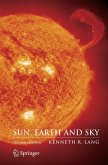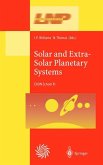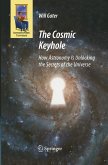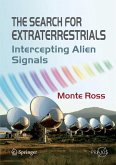This book is about an audacious idea: asteroengineering-literally, the physical engineering of a star, especially the star we call our Sun. It is an idea on the grandest of scales. Part science fiction, part science fact, asteroengineering is a response to a very definite and a very real problem, a problem that our distant descendants will one day have to face. It is also a universal problem that will be experienced - at some stage or other - by every extraterr- trial civilization that has or will exist. Indeed, the problem to be addressed resides within the parent stars of each and every li- supporting planetary system within our galaxy. In short, stars puff up to become luminous red giants as they age, and by doing this they vaporize those planets previously situated in the habitability zone where life can otherwise thrive. As their parent star ages and approaches the red giant phase, a civilization has two options open to it: stay at home, or pack up and leave. The latter option would require the hapless civilization to cocoon itself within giant spa- ships and then set itself adrift in the uncharted depths of space. If a civilization chooses to stay put, however, then all life will end-unless, that is, something is done about the demise of its parent star.
From the reviews:
"In this book based on several of his previously published scientific articles, Beech ... investigates the idea that the evolution of the sun can be controlled. ... the book offers much fascinating material on extraterrestrial life and provides an interesting discussion of why extraterrestrials have never visited Earth. ... Each chapter ends with extensive notes and references. Summing Up: Recommended. General readers; lower-division undergraduates through researchers." (B. R. Parker, CHOICE, Vol. 45 (10), June, 2008)
"Beech takes great care and time to fully describe the workings of the Sun. As a grounding in solar astrophysics this is an excellent read and even if we do not know exactly how we could engineer our Sun at the present time, it is a useful thought experiment to better understand how our Sun operates. ... Add to this some interesting insights into SETI, Solar System colonisation and humanity's near future, and you have a very thought-provoking book." (Keith Cooper, Astronomy Now, July, 2008)
"If you have ever mused over what will become of Mother Earth when the Sun evolves away from the main sequence, here is a book to carry you further into the realms of futuristic science than you have probably hitherto visited. ... The book discusses the probabilities and devastation levels of known celestial-based disasters from supernovae to large meteorites. ... Beech writes well, with a slight whimsical humour ... he offers a comfortable read." (Elizabeth Griffin, The Observatory, Vol. 128 (1206), October, 2008)
"In this book based on several of his previously published scientific articles, Beech ... investigates the idea that the evolution of the sun can be controlled. ... the book offers much fascinating material on extraterrestrial life and provides an interesting discussion of why extraterrestrials have never visited Earth. ... Each chapter ends with extensive notes and references. Summing Up: Recommended. General readers; lower-division undergraduates through researchers." (B. R. Parker, CHOICE, Vol. 45 (10), June, 2008)
"Beech takes great care and time to fully describe the workings of the Sun. As a grounding in solar astrophysics this is an excellent read and even if we do not know exactly how we could engineer our Sun at the present time, it is a useful thought experiment to better understand how our Sun operates. ... Add to this some interesting insights into SETI, Solar System colonisation and humanity's near future, and you have a very thought-provoking book." (Keith Cooper, Astronomy Now, July, 2008)
"If you have ever mused over what will become of Mother Earth when the Sun evolves away from the main sequence, here is a book to carry you further into the realms of futuristic science than you have probably hitherto visited. ... The book discusses the probabilities and devastation levels of known celestial-based disasters from supernovae to large meteorites. ... Beech writes well, with a slight whimsical humour ... he offers a comfortable read." (Elizabeth Griffin, The Observatory, Vol. 128 (1206), October, 2008)

